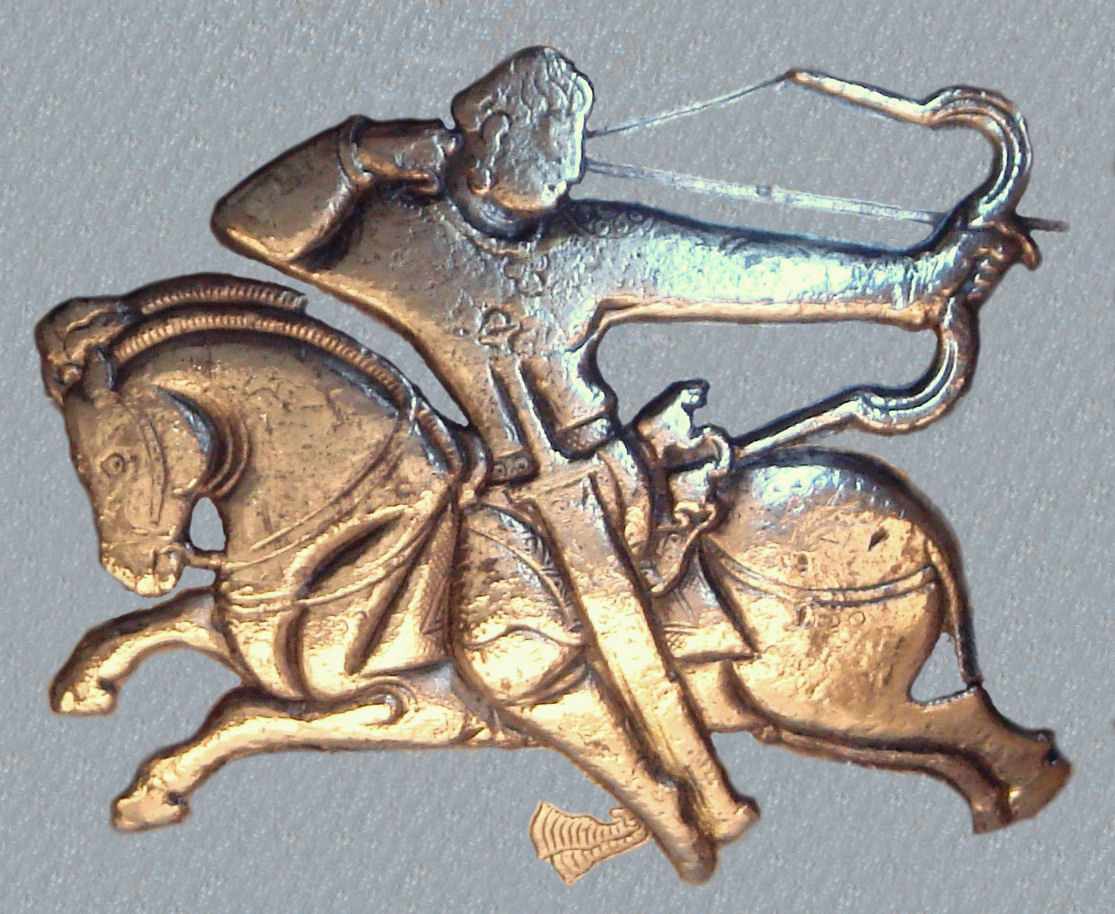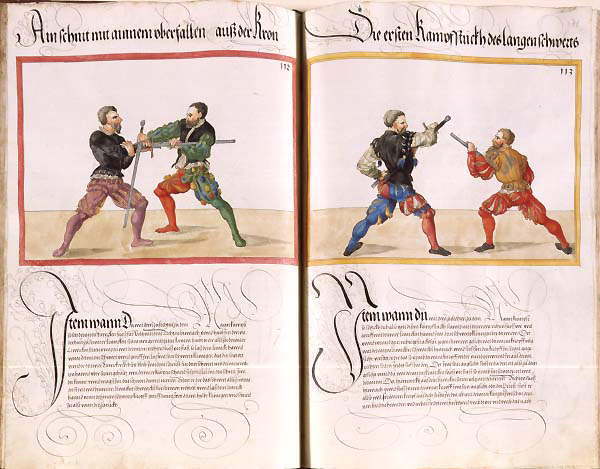|
|
Post by Von K on Jul 7, 2023 14:22:18 GMT -5
I have always associated the recurve bow and horsemanship with those eastern steppe barbarians.  Yeah, once they had that combo between horsemanship, mounted marksmanship, the more powerful and compact re-curve bows and the shoot and withdraw tactics down pat they were one of the most deadly and maneuverable fighting forces of the period.
REH referred to his Turanians as Hyrkanians at times, he saw them all as one people, though the Turanians seem to resemble the more settled Turks of the early Ottoman empire than their wilder steppe progenitors by at least a few generations imho.
|
|
|
|
Post by kemp on Jul 7, 2023 21:25:00 GMT -5
I have always associated the recurve bow and horsemanship with those eastern steppe barbarians.  Yeah, once they had that combo between horsemanship, mounted marksmanship, the more powerful and compact re-curve bows and the shoot and withdraw tactics down pat they were one of the most deadly and maneuverable fighting forces of the period.
REH referred to his Turanians as Hyrkanians at times, he saw them all as one people, though the Turanians seem to resemble the more settled Turks of the early Ottoman empire than their wilder steppe progenitors by at least a few generations imho.
I agree, and I am reminded of the cavalry run and hit tactic known as the Parthian shot.  |
|
|
|
Post by Von K on Jul 8, 2023 17:07:46 GMT -5
Yeah, once they had that combo between horsemanship, mounted marksmanship, the more powerful and compact re-curve bows and the shoot and withdraw tactics down pat they were one of the most deadly and maneuverable fighting forces of the period.
REH referred to his Turanians as Hyrkanians at times, he saw them all as one people, though the Turanians seem to resemble the more settled Turks of the early Ottoman empire than their wilder steppe progenitors by at least a few generations imho.
I agree, and I am reminded of the cavalry run and hit tactic known as the Parthian shot.  Just your reminder that the tactic has been around since 1000 BC or even earlier, along with composite bows such as I can find. 
The Parthians used it without stirrups which was an even more impressive feat. Hun could fill us in on a lot of details.
There's a computer game called Rome Total War, graphically old now but a classic of it's sort. The author David Gemmell considered it one of the best games ever made and was proud of having won a campaign as the Parthians, considered at the time one of the harder factions to win with in the original game.
|
|
|
|
Post by Von K on Jul 8, 2023 17:46:05 GMT -5
|
|
|
|
Post by kemp on Jul 9, 2023 7:27:13 GMT -5
The compact size of some of the composite bow designs makes them perfect for archery from horseback.  ![]() From your link  From top to bottom: Korean, North Indian, Ottoman and Manchu (string bridges missing).  Manchu archer |
|
|
|
Post by Von K on Jul 9, 2023 16:47:56 GMT -5
Kemp, I just found a related vid from Matt over at scholagladiatoria. Is there anything that Matt doesn't cover? Horse archers - good, but not the answer to everything
|
|
|
|
Post by kemp on Jul 10, 2023 1:56:32 GMT -5
Valid points made by Matt, Mongols also had their infantry and heavy cavalry, especially when you want to take, and more importantly, hold ground, and big shields and armour were effective against archers shooting from horseback, but I suppose it's one of those things, think steppe Mongol warrior and mounted archer comes to mind for many of us.
|
|
|
|
Post by kemp on Jul 17, 2023 21:45:43 GMT -5
Years ago bought a next generation sword which was so damned heavy, no distal tapier, the point of balance was too far from the hilt, too thick towards the point, just a badly balanced wall hanger, I took it apart, kept the fittings for my own projects and sold the bare blade to someone who wanted to use it for customisation, probably should have kept it myself and just carefully ground of material and turned it into something good.
Anyway, been thinking how the modern world of replica blades makes some really good stuff, especially the mid to high end, but some of the cheap knock offs still get it very wrong, overly heavy and clumsy, some manufacturers not understanding that many, if not the greater number of historical medieval swords were very wieldly, nicely balanced, functional weapons of war.
|
|
|
|
Post by Von K on Jul 18, 2023 15:28:23 GMT -5
Years ago bought a next generation sword which was so damned heavy, no distal tapier, the point of balance was too far from the hilt, too thick towards the point, just a badly balanced wall hanger, I took it apart, kept the fittings for my own projects and sold the bare blade to someone who wanted to use it for customisation, probably should have kept it myself and just carefully ground of material and turned it into something good. Anyway, been thinking how the modern world of replica blades makes some really good stuff, especially the mid to high end, but some of the cheap knock offs still get it very wrong, overly heavy and clumsy, some manufacturers not understanding that many, if not the greater number of historical medieval swords were very wieldly, nicely balanced, functional weapons of war. Interesting vid kemp, thanks. That 3lb blade turned out to be a lot lighter than might be expected from the broadness of the blade. That training sword was fairly unusual too. I seem to recall BlackHeart saying that his replica Atlantean blade was close to 6lbs and fairly unwieldy.
|
|
|
|
Post by kemp on Jul 18, 2023 22:39:59 GMT -5
Interesting vid kemp, thanks. That 3lb blade turned out to be a lot lighter than might be expected from the broadness of the blade. That training sword was fairly unusual too. I seem to recall BlackHeart saying that his replica Atlantean blade was close to 6lbs and fairly unwieldy.
My understanding was that there were two versions of the Atlantean, a shorter one from the first CtB and one that had a slightly longer blade from CtD, unsure about all the specs and weight, or if replicas hitting the markets were based on one or both versions. |
|
|
|
Post by kemp on Jul 18, 2023 22:47:48 GMT -5
I did find this 'The Atlantean Sword's blade was 27" long, and including the handle reached 36.5 inches in length. The handle extends about 6.5 inches up along the blade above the guard, which is a very unusual design for a sword. The idea was to make a sword so that someone could reach forward and hold the blade above the guard. In any case, the design gives a unique and very interesting look to the sword and makes one wonder whether it really was designed by the inhabitants of ancient Atlantis. The sword also has runic hieroglyphs carved along its blade, but according to Jody Samson, master sword maker for Conan the Barbarian, they are meaningless markings in a made up script. The Destroyer Atlantean is two inches longer than the Barbarian Atlantean overall—an inch longer in the grip and an inch longer in the cutting edge of the blade. Other differences include a slightly wider ricasso, more "hooked" langets, and leather lace wrapped around the hilt.' conan.fandom.com/wiki/Atlantean_Sword |
|
|
|
Post by Von K on Jul 19, 2023 13:19:00 GMT -5
I did find this 'The Atlantean Sword's blade was 27" long, and including the handle reached 36.5 inches in length. The handle extends about 6.5 inches up along the blade above the guard, which is a very unusual design for a sword. The idea was to make a sword so that someone could reach forward and hold the blade above the guard. In any case, the design gives a unique and very interesting look to the sword and makes one wonder whether it really was designed by the inhabitants of ancient Atlantis. The sword also has runic hieroglyphs carved along its blade, but according to Jody Samson, master sword maker for Conan the Barbarian, they are meaningless markings in a made up script. The Destroyer Atlantean is two inches longer than the Barbarian Atlantean overall—an inch longer in the grip and an inch longer in the cutting edge of the blade. Other differences include a slightly wider ricasso, more "hooked" langets, and leather lace wrapped around the hilt.' conan.fandom.com/wiki/Atlantean_SwordThat reminds me - one thing I was curious about in Adam's vid kemp was the ricasso on the training blade featured.
|
|
|
|
Post by Von K on Jul 19, 2023 14:50:12 GMT -5
Review: Federschwert from Red Dragon / HEMA Shop, part 1
|
|
|
|
Post by kemp on Jul 19, 2023 21:06:11 GMT -5
The training feders, I assumed it was similar to some of the other historical ones used for training centuries ago, also in modern HEMA, the blunt tips, long ricasso ( schilt ), broad at the base reminds me a little of the Atlantean sword. In the case of feders, since the rest of the blade is slim, the broader base may carry some weight back to the hilt to allow for a better point of balance to 'mimic' real swords, in actual swords that width is gradual and carried over the entire length, even when tapering hence little need to have a sudden wide termination. Of course there are many more designs. From article provided 'The swords used for real fighting tended to be slightly broader than this for training purposes or for decoration. Slim swords look very nice, but they do not tend to have the best geometry for cutting and doing their work effectively. A broader blade carries more mass, tends to be slightly more rigid, and will often cut much better than a blade might light and slim for aesthetics. “Feder” style training swords depicted in Germanic artwork from the 15th and 16th centuries often have slim blades (presumably for ease and safety of training), and a broad schilt at the base of the blade.'    |
|
|
|
Post by Von K on Jul 19, 2023 21:41:55 GMT -5
I think you're right about mimicing the weight kemp. Might also explain the very long hilts and large pommels that many of these tend to have.
|
|